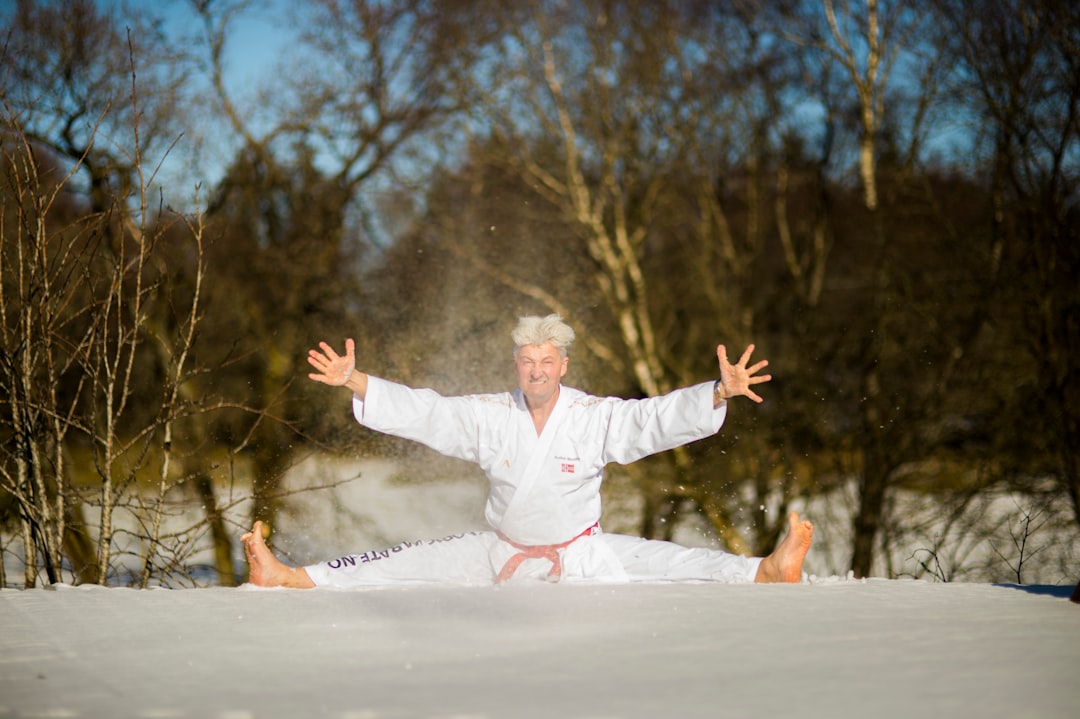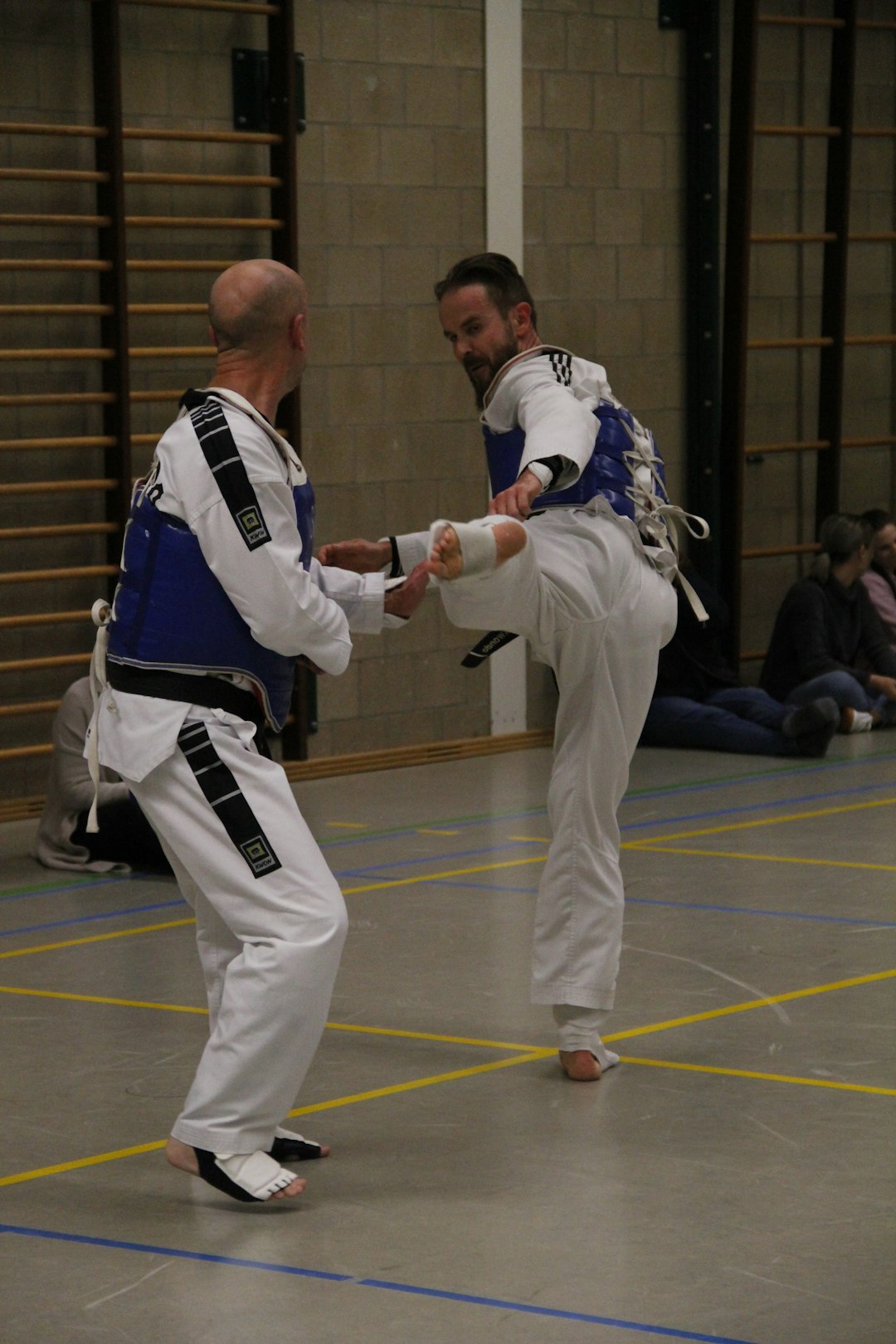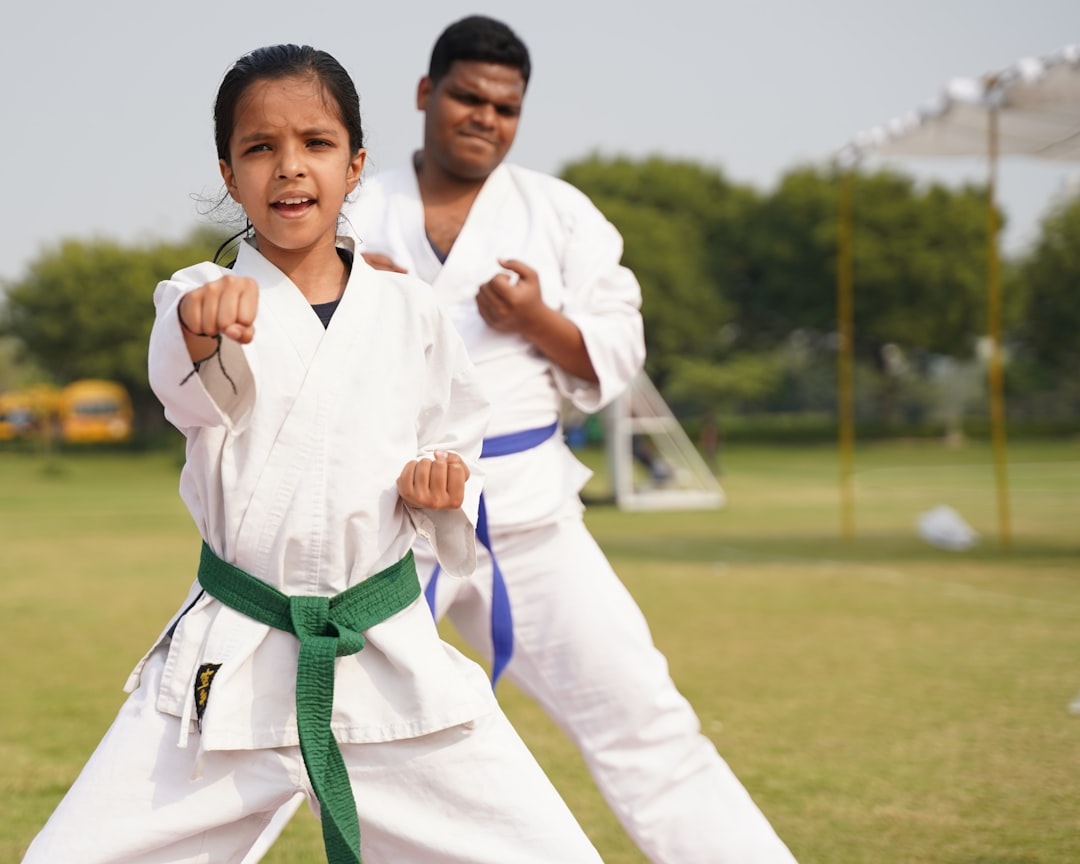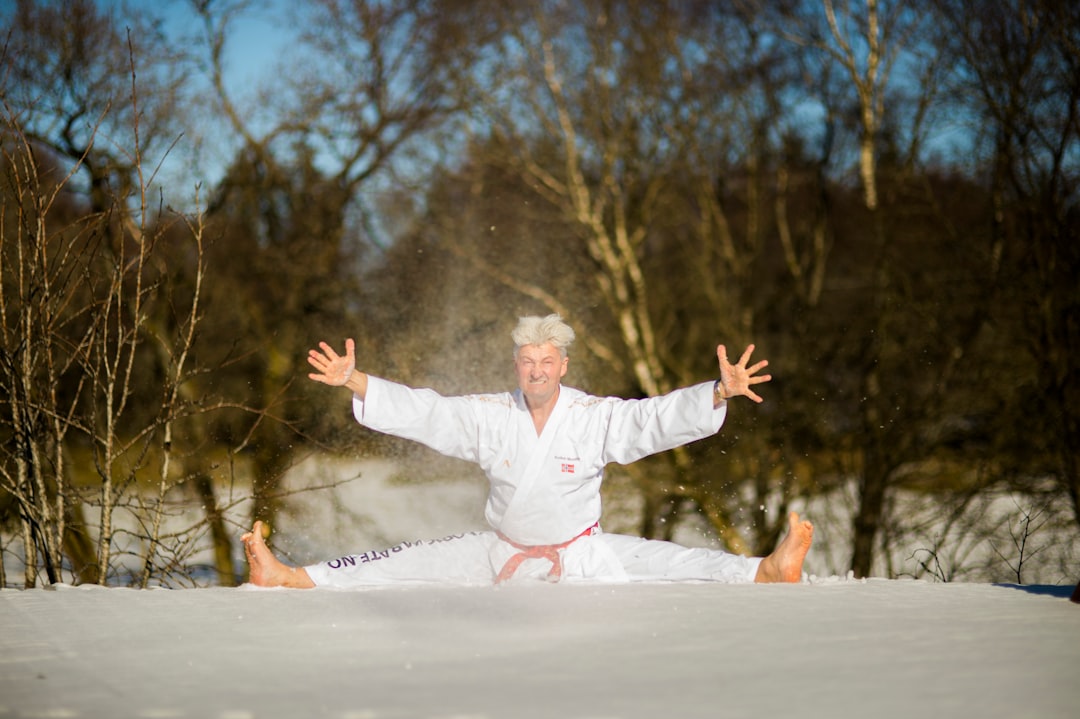Karate practitioners should prioritize wearing a well-fitting karate gi—a traditional white uniform made from high-quality cotton or a durable blend that supports movement without compromise. The gi's design, featuring reinforced knees and a respectful nod to tradition with a natural bow on the obi, reflects both functionality and honor within the dojo. Safety is paramount during full-contact exercises, necessitating protective gear such as mitts or gloves for hands and foot protectors for kicks, all chosen for their balance of safety, comfort, and performance. Advanced karateka may also utilize specialized tools like Nakayama shiai gloves, makiwara boards, and balance training equipment to refine technique and augment strength. These elements collectively ensure a respectful and effective practice environment that aligns with karate's traditional ethos while accommodating modern training needs. Remember to choose a karate uniform that adheres to the sport's standards for both safety and tradition, with a focus on quality and fit that allows for uninhibited movement.
Embark on a dynamic journey into the world of karate, where discipline meets precision. Whether you’re a novice or an advanced practitioner, the foundation of your martial arts practice hinges on the right equipment. This comprehensive guide will unveil what you need to start your karate training with confidence and safety. From selecting the optimal karate uniform to acquiring essential protective gear, we’ll cover everything required for a robust training regimen. Additionally, discover advanced tools that can enhance your technique and strength, elevating your martial arts experience.
- Essential Karate Gear: Breaking Down the Necessities for Beginners
- The Definitive Guide to Selecting Your Ideal Karate Uniform
- Key Protective Equipment and Safety Gear for Karate Practitioners
- Advanced Karate Training Tools: Enhancing Your Technique and Strength
Essential Karate Gear: Breaking Down the Necessities for Beginners

Karate practice involves a specific set of gear that is both functional for training and indicative of the discipline’s traditional roots. A karate uniform, commonly known as a gi, is an essential piece of equipment for any beginner. The gi should be white or another solid color, typically made of cotton or a cotton blend, and consist of a jacket, trousers, and belt, reflecting the martial artist’s rank. Are the trousers reinforced at the knees? For optimal functionality during practice, many gis come with reinforced knees to prevent wear and tear over time. What about the belt? The belt, or obi, is not only a part of the uniform but also represents the student’s dedication and rank within the dojo. It’s traditionally tied in a bow at the front; however, some styles may require it to be worn differently for different levels.
In addition to the gi, safety gear is crucial for beginners engaging in full-contact exercises or sparring. Hand protectors, also known as mitts or gloves, are designed to shield both the striker and the target from injury during striking drills. Do the hand protectors allow for a natural grip? They should be well-padded yet allow for a natural grip on the pad or bag, ensuring that techniques are executed with proper form. Foot protection is equally important, as it prevents slipping and offers support and cushioning for the feet during kicks. Are the foot protectors designed to minimize the risk of injury? The best foot protectors are those that fit well and minimize the risk of injury to both the wearer and their partner, while also providing a stable base for powerful kicks. A mouthguard is another piece of safety gear that should not be overlooked, as it protects the teeth and gums from accidental impacts during training.
The Definitive Guide to Selecting Your Ideal Karate Uniform

When selecting a karate uniform, also known as a gi, comfort and functionality are paramount for any practitioner. The ideal karate uniform should not only adhere to traditional standards but also accommodate the movements inherent to the martial art. Are the karate uniform names you’re considering made from high-quality cotton or a blend that offers both durability and flexibility? This material choice is crucial as it ensures the garment withstands the rigors of practice while allowing for full range of motion during techniques like kicks, blocks, and strikes. Additionally, consider the weight of the fabric; a medium to heavyweight option can provide adequate coverage without being overly restrictive. Does the uniform have a weight that balances warmth with ease of movement? A well-chosen weight will keep you comfortable throughout your training sessions, regardless of the environmental conditions.
Furthermore, the cut and fit of the karate uniform play a significant role in its effectiveness. A traditional straight-leg pant and a jacket with a Mandarin collar are staples in a karate gi. Does the uniform you’re eyeing follow this classic design to honor the traditions of karate? Ensure the size is tailored to your body, not too tight or too loose, as this can affect your performance and comfort during practice. Lastly, consider the color; white is the most common and widely accepted in competitions and dojos worldwide. Is the uniform available in a white option that signifies purity and readiness for training? By addressing these aspects, you’ll be well-equipped to select a karate uniform that meets both your needs and the expectations of traditional karate practice.
Key Protective Equipment and Safety Gear for Karate Practitioners

When practicing karate, safety and proper attire are paramount to ensure both the practitioner’s well-being and the integrity of the training. A fundamental piece of equipment for any karateka is the karate uniform, also known as a gi. The gi not only signifies respect for the martial art but also allows for ease of movement and flexibility, which are essential when executing various techniques. It’s constructed from a heavy cotton fabric that provides durability and comfort during practice. Does the karate uniform offer protection against minor scrapes and bruises? Yes, while primarily serving to facilitate movement, the thick fabric of the gi helps cushion minor impacts and scrapes that are common in training, adding an extra layer of safety for the practitioner.
In addition to the gi, protective gear is crucial for certain aspects of karate training. Padding for the hands and feet, known as mitts or hand protectors, are designed to safeguard both the striker and the recipient of strikes during sparring sessions. Are these protections mandatory for effective and safe practice? Indeed, they are not just optional; they are a critical component of protective gear in karate. The hand protectors, for instance, are designed to absorb the impact of punches without compromising the technique or speed of the movement. Similarly, foot protectors, often called kick shields, are essential for practicing high kicks and knee strikes, as they provide protection for both parties involved in the drill. Together with a well-fitted karate uniform, these protective measures significantly enhance the safety of karate practice, allowing practitioners to train with confidence and focus on perfecting their skills.
Advanced Karate Training Tools: Enhancing Your Technique and Strength

For practitioners looking to elevate their karate training, advanced tools can significantly enhance both technique and strength. Are karate training tools like nakayama shiai gloves and makiwara boards essential for advanced practice? While not strictly mandatory, these tools can be highly beneficial. Nakayama shiai gloves, for instance, provide protection for the knuckles and increase focus on technique during striking drills. Makiwara boards, on the other hand, are used to condition the hands and forearms, improving resilience and power in punches. Additionally, balance training equipment, such as BOSU balls or stability pads, can help karateka develop core strength and improve their overall stability, which is crucial for dynamic movements and kata performance. A karate uniform, designed to facilitate movement without impeding performance, remains a staple in the arsenal of an advanced practitioner, ensuring comfort and appropriateness during training sessions.
In conclusion, embarking on a journey in karate requires careful consideration of the appropriate equipment to ensure both safety and effectiveness in practice and performance. Beginners will find their footing with essential gear such as a well-fitted karate uniform, which not only signifies respect within the dojo but also provides comfort and mobility during training. As one progresses, protective equipment becomes paramount to safeguard against injuries during impact exercises or sparring sessions. For those aiming to advance their skills, a selection of specialized tools can help refine techniques and build strength. Remember, the right gear complements the disciplined mindset and rigorous training that karate demands, fostering an environment where practitioners can reach their full potential. Whether you’re a novice or an experienced martial artist, the key to your progress lies in the harmonious combination of dedication, technique, and quality equipment.
